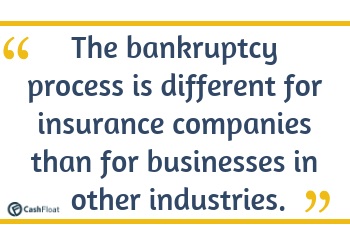Browsing Company Administration: Comprehending the Process in the UK
The Refine and Consequences of a Company Getting Into Management
As a firm deals with financial distress, the decision to get in management marks a vital juncture that can have far-ranging effects for all included parties. The procedure of going into administration is detailed, entailing a series of actions that aim to navigate the firm towards potential recuperation or, in some situations, liquidation.

Introduction of Company Administration Refine
In the realm of business restructuring, an essential preliminary action is acquiring a thorough understanding of the elaborate firm management process. Firm management refers to the official insolvency procedure that intends to save a financially distressed firm or achieve a much better outcome for the firm's creditors than would be feasible in a liquidation circumstance. This process includes the visit of a manager, who takes control of the business from its supervisors to analyze the financial situation and figure out the ideal strategy.
During management, the firm is provided protection from legal action by its lenders, supplying a halt period to formulate a restructuring plan. The administrator collaborates with the business's administration, creditors, and other stakeholders to create a method that might entail marketing the business as a going concern, reaching a company voluntary arrangement (CVA) with creditors, or ultimately positioning the firm right into liquidation if rescue efforts confirm useless. The main objective of business administration is to optimize the go back to lenders while either returning the company to solvency or closing it down in an orderly fashion.
Duties and Obligations of Administrator
Playing a crucial duty in managing the business's financial affairs and decision-making procedures, the manager presumes considerable duties throughout the business restructuring process. The key obligation of the manager is to act in the very best interests of the firm's lenders, aiming to attain one of the most beneficial outcome feasible. company administration uk. This entails carrying out an extensive assessment of the business's financial scenario, establishing a restructuring strategy, and carrying out strategies to make best use of returns to financial institutions
Furthermore, the manager is accountable for communicating with different stakeholders, consisting of employees, distributors, and regulatory bodies, to make certain transparency and conformity throughout the management process. They need to also interact effectively with shareholders, giving regular updates on the business's progression and seeking their input when required.
In addition, the administrator plays a critical role in handling the everyday operations of business, making vital decisions to preserve connection and maintain value. This includes examining the viability of different restructuring choices, bargaining with creditors, and ultimately assisting the firm in the direction of a successful departure from administration.
Effect On Company Stakeholders
Thinking an essential placement in overseeing the company's financial events and decision-making procedures, the administrator's actions during the company restructuring procedure have a straight effect on different business stakeholders. Shareholders might experience a decrease in the value of their investments as the company's economic troubles are attended to. Lenders, including suppliers and lending institutions, may face unpredictabilities relating to the payment of debts owed to them. Staff members usually come across task insecurities as a result of prospective layoffs or adjustments in work problems as component of the restructuring efforts. Consumers may experience disruptions in solutions or product accessibility throughout the management process, affecting their trust and commitment in the direction of the company. In addition, the area where the business operates could be impacted by prospective work losses or changes in the company's operations, influencing regional economic climates. Effective interaction from the administrator to stakeholders is crucial in handling assumptions, alleviating concerns, and promoting openness throughout the administration procedure.
Legal Ramifications and Commitments
Throughout the procedure of firm management, mindful consideration of the legal implications and obligations is critical to make sure conformity and secure the passions of all stakeholders entailed. When a firm gets in management, it causes a collection of lawful demands that need to be abided by. Among the main responsibilities is for the selected administrator to act in the finest rate of interests of the business's creditors. This responsibility requires the administrator to perform detailed examinations right into the business's affairs, assess its financial placement, and create a method to make best use of go back to lenders.
In addition, lawful implications emerge concerning the treatment of staff members. The administrator has to comply with employment legislations concerning redundancies, staff member legal rights, and obligations to give required information to worker representatives. into administration. Failing to adhere to these lawful requirements can lead to lawsuit versus the company or its managers
Moreover, the business going into management may have contractual responsibilities with various parties, including landlords, consumers, and distributors. In essence, understanding and fulfilling lawful commitments are vital elements of navigating a firm via the administration process.
Approaches for Business Recovery or Liquidation
In considering the future instructions of a business in administration, critical preparation for either recovery or liquidation is essential to chart a sensible path forward. When going for company recuperation, essential strategies might include performing a thorough evaluation of business procedures to determine inefficiencies, renegotiating leases or contracts to enhance capital, and executing cost-cutting actions to improve productivity. Furthermore, looking for new financial my explanation investment or financing choices, diversifying profits streams, and concentrating on core proficiencies can all add to a successful recuperation plan.
On the other hand, in circumstances where business liquidation is regarded the most proper course of action, methods would include optimizing the value of possessions via efficient possession sales, resolving outstanding financial obligations in an organized manner, and complying with legal needs to ensure a smooth winding-up procedure. Interaction with stakeholders, consisting of financial institutions, employees, and clients, is critical in either scenario to maintain transparency and manage expectations throughout the healing or liquidation procedure. Eventually, selecting the ideal method relies on a thorough analysis of the firm's economic wellness, market setting, and long-lasting top article potential customers.
Final Thought
To conclude, the process of a business entering administration entails the consultation of an administrator, who takes on the responsibilities of taking care of the firm's events. This process can have significant effects for numerous stakeholders, consisting of shareholders, financial institutions, and workers. It is necessary for companies to very carefully consider their choices and approaches for either recovering from financial troubles or waging liquidation in order to mitigate possible legal effects and responsibilities.
Company management refers to the formal bankruptcy procedure that intends to rescue a monetarily distressed firm or achieve a far better result for the business's creditors than would be feasible in a liquidation situation. The manager works with the business's monitoring, lenders, and various other stakeholders to develop an approach that may include selling the company as a going problem, reaching a business volunteer plan (CVA) with creditors, or eventually positioning the company into liquidation if rescue efforts confirm futile. The main objective of firm administration is to maximize the return to lenders while either returning the business to solvency or shutting it down in an orderly manner.
